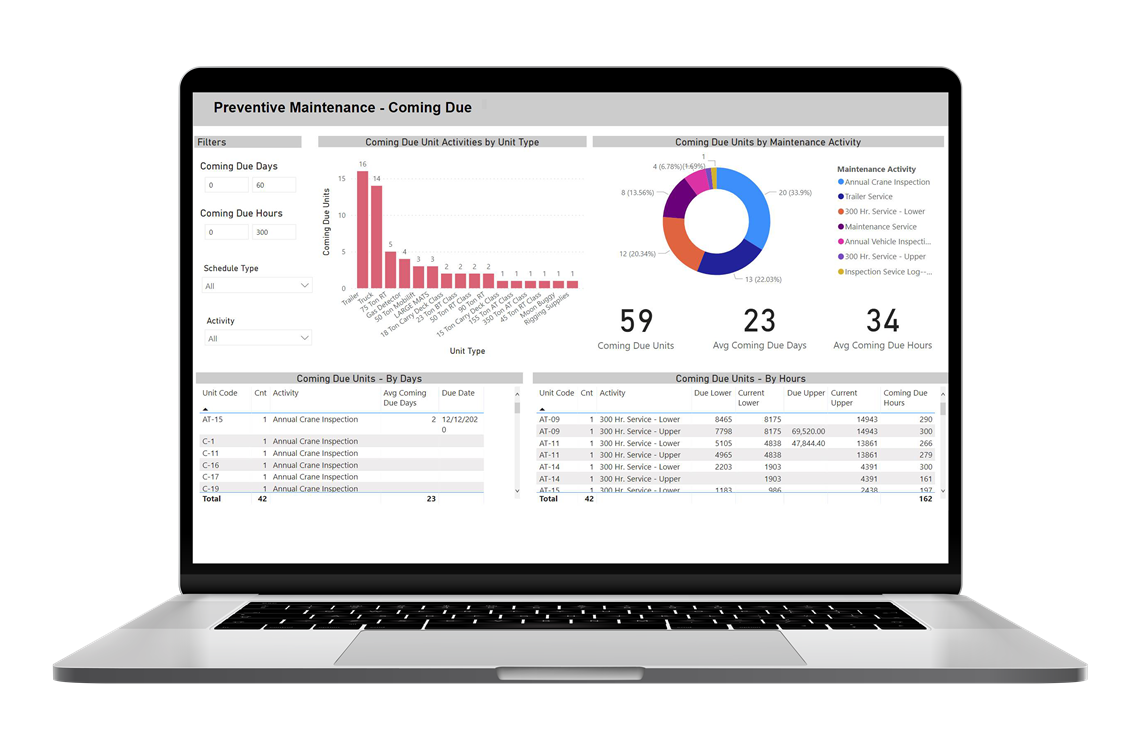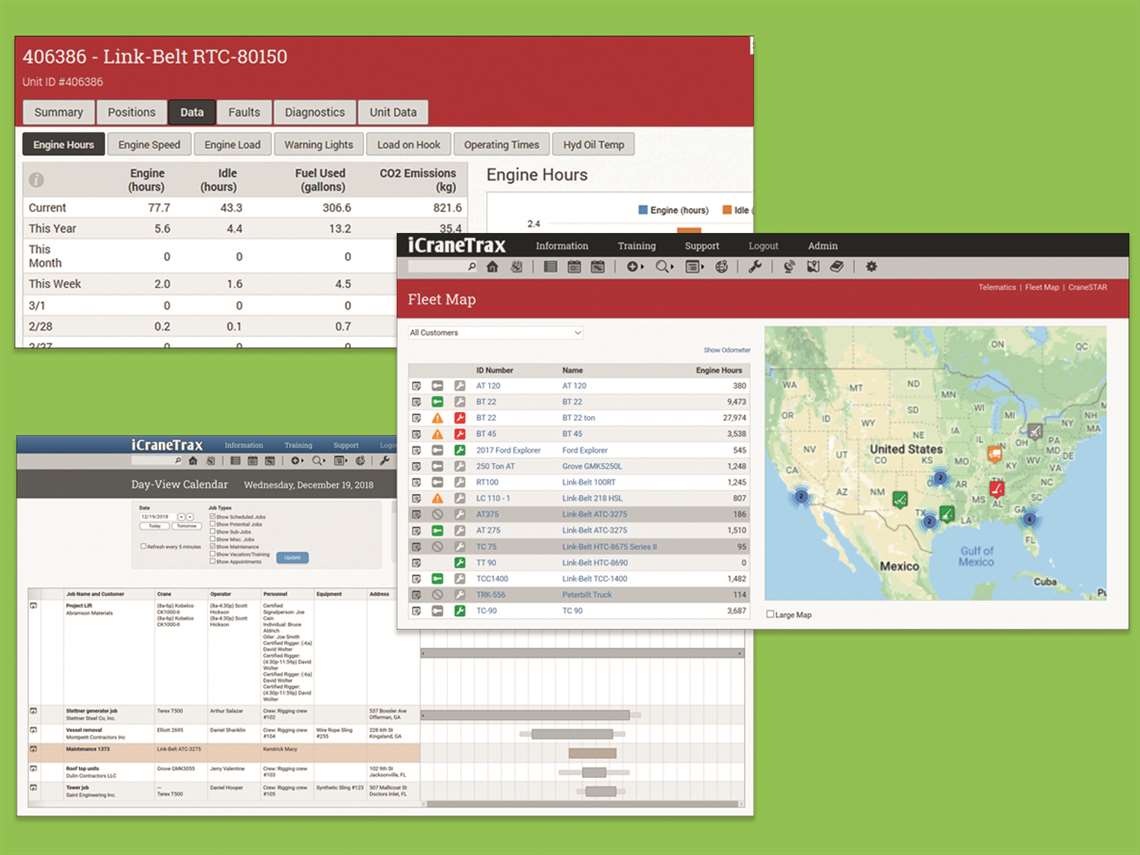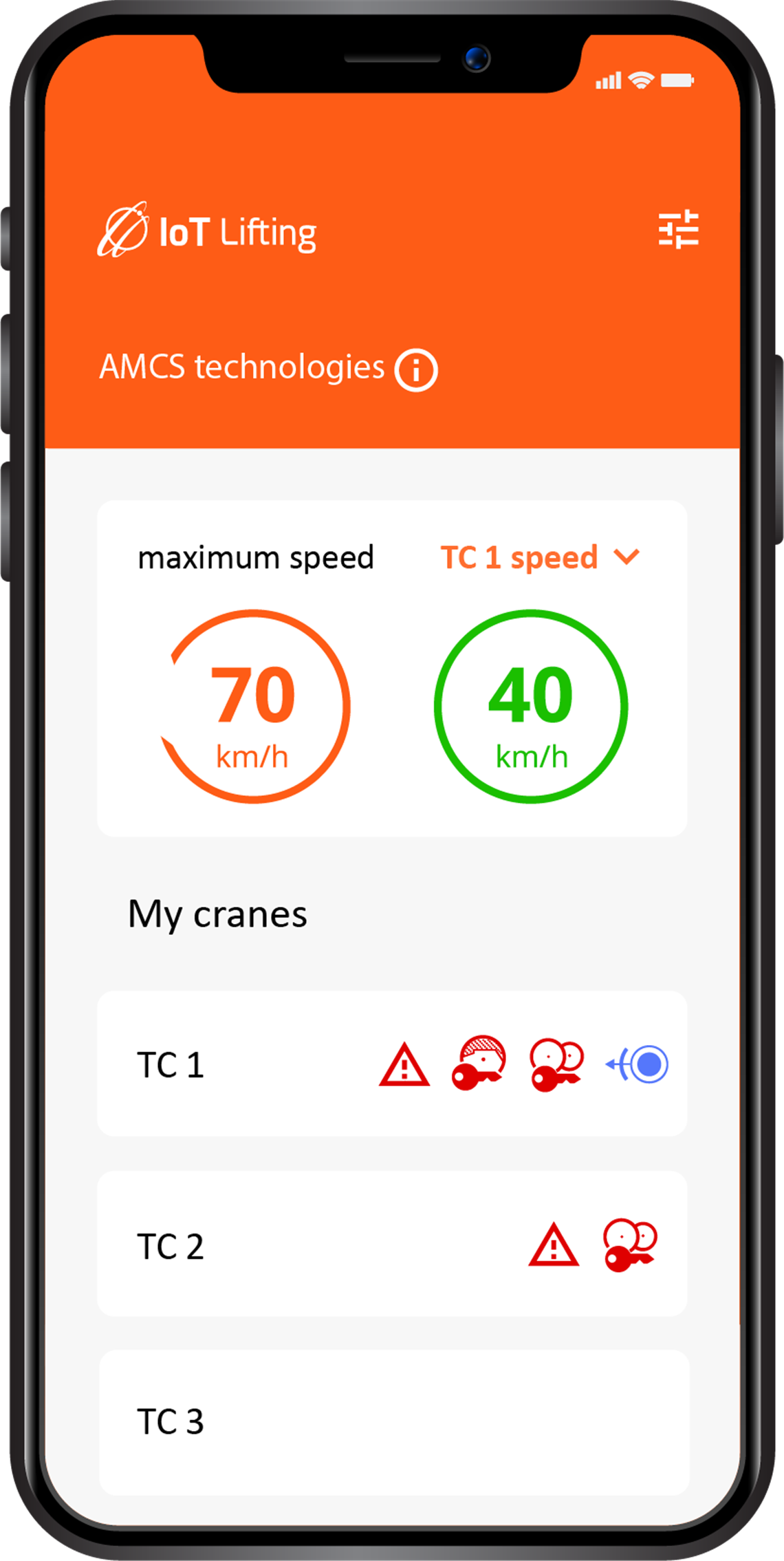Telematics usage expected to grow
12 January 2021
Effective fleet management and the data from telematics systems are especially valuable, especially in a down market.
As manufacturers and end-users continue to learn how to navigate a Covid-19 landscape, the construction world has undoubtedly experienced its fair share of market impact and project delays.
 Telematics data can be leveraged by Fleet Cost & Care’s system to better manage preventative maintenance and reduce labor costs.
Telematics data can be leveraged by Fleet Cost & Care’s system to better manage preventative maintenance and reduce labor costs.
“Many construction projects have been postponed, more people have been working from a home office and lock downs have accelerated the demand and the need for remote management tools,” said Radoine Bouajaj, sales director, AMCS technologies. “The digitalization of work tools is in very strong demand. The objective for all companies today is to ensure productivity but above all the safety of construction sites, equipment and workers. They need to analyze the data by having access to them remotely and in real time.”
Fleet management and telematics systems are being utilized in trucking and transportation and in the crane rental realm. Demand is continuing to flourish despite the current economic environment due to the pandemic.
“According to Morder Intelligence research, telematics usage in construction is expected to grow by about 12 percent annually, through 2025,” said Tawnia Weiss, president, A1A Software. “However, they note that North America is lagging Asia and Europe in adoption. For crane applications specifically, the use of telematics for fleet management is still in its infancy. Other industries in North America, such as trucking, are further along, due to requirements for use of Electronic Logging Devices (ELD) for tracking driver hours of service.”
 iCraneTrax combines sales, dispatch and fleet maintenance into one application to more effectively manage rental operations.
iCraneTrax combines sales, dispatch and fleet maintenance into one application to more effectively manage rental operations.
Investment return
“When it comes to telematics and fleet management, the product is not just the physical device or application that tracks the information – it is also the user interface, customer service, ability to integrate with other systems and overall reliability of the information being tracked,” said David Thornton, senior technical product manager, Fleet Cost & Care. “Looking at market share or third-party ratings are no more viable than looking at a vendor’s website to see the objective truth. When trying to find the strongest vendors out there, the market is looking for those vendors that others are talking about. The same can be said for fleet management solutions.”
Generally, larger companies – both contractors and crane rental – are more likely to invest in telematics for fleet management because of the return on investment that is gained through high volume, according Weiss at A1A Software.
“It makes less sense for small companies, although iCraneTrax has been adopted by several smaller crane rental companies with great success,” Weiss said. iCraneTrax, the fleet and business management software from A1A, now enables telematics data points to feed other software programs. iCraneTrax combines sales, dispatch and fleet maintenance with telematics into one application to manage rental company daily operations and increase revenue more efficiently.
Digital transition
AMCS technologies’ Bouajaj said there is a trend toward digital transition and consequently to the enlargement of the fields of competencies to offer comfort options to customers. AMCS has had many customer requests for fleet management tools to monitor the productivity of their lifting machines.
Regardless of market conditions, utilizing telematics data to manage an equipment fleet has many benefits.
“It can help you reduce costs by extending the life of your equipment and by making your operations more efficient,” said Weiss. “The ability to plan scheduled maintenance, diagnose equipment problems remotely and tracking equipment location for timely dispatch or theft recovery are all outcomes of an integrated telematics solution.”
Thornton added that fleet management and telematics data are the keys to tightening gaps in expenditures – this could be fuel costs, insurance, safety or even on field labor.
“Taking it a step further, combining fleet management and telematics provides the opportunity to reduce administrative labor costs,” said Thornton. “With employee time entries entering the system automatically and the business rules engines in fleet management software, what used to take days to process labor, can now be done in minutes. Telematics providers offer a great interface for identifying the serviceability of a vehicle, but it is the fleet management system that manages the process of servicing the vehicle – combining this information through an integration saves time, money, and improves accuracy of records. With a strong fleet management system that leverages the data collected by telematics providers, businesses can go beyond the capacity of any one system. Integration is an incredibly powerful tool.”
Ahead of the curve
When it comes to new technology and features that are driving the latest systems, telematics and fleet management systems are paving the way for more effective data utilization.
 AMCS technologies developed a telematics application called IoT Lifting which combines both web and mobile devices.
AMCS technologies developed a telematics application called IoT Lifting which combines both web and mobile devices.
“Right now, telematics providers are ahead of the curve on data collection technologies and data points, which is a good thing,” said Thornton. “What users are looking toward now is utilization of all this data. Just having a repository of every Daily Vehicle Inspection Report is not sufficient. Customers are asking, ‘How can we use this information? How can we combine this information with our existing system(s)?’ Integration, the ability for two or more systems to work together, is a driving force in the decision-making process today.”
Weiss explained, “As the integration of API (Application Programming Interface) becomes more widespread into telematics data collection from various OEMs and third-party providers, it will become easier for businesses that own various types and makes of equipment to streamline the information.”
A1A Software recently enabled all its data points to feed into other software programs. This includes data points as defined by AEM Telematics Standard, ISO 15143-3, as well as custom data points selected by the user.
“When the ISO standard for cranes is complete, we will also program iCraneTrax to share that data,” said Weiss. “The other trend is the development of apps that make telematics information available and usable using smart technologies. This makes it more convenient to access information and enables users to react in the moment to alerts. In 2020, we released iTeleTrax, which allows iCraneTrax customers to access six different information pages right from their phones. This makes it easier for operators, technicians or fleet managers to respond to critical information while on the go or on the job site.”
AMCS technologies also offers digital tools combining several functions in a single product.
“Our objective is to guarantee safety thanks to new technologies while expanding our fields of expertise,” said Bouajaj.
Enhancing jobsite safety
AMCS technologies has also developed its own telematics application called IoT Lifting, which is comprised of a web platform and a mobile application. These tools provide access to concrete and technical data in real time concerning anti-collision systems and the use of the crane. It collects all the information transmitted by the DCS 61-S anti- collision systems relating to each crane on a mobile application as well as a web portal and generates personalized statistics according to each site and company. By adding a SIM card (with a 3G / 4G network) in DCS 61-S systems, it collects information continuously thanks to various sensors placed on the cranes. It is thus possible to store, send and receive this information on the web portal, the company said.
STAY CONNECTED


Receive the information you need when you need it through our world-leading magazines, newsletters and daily briefings.




